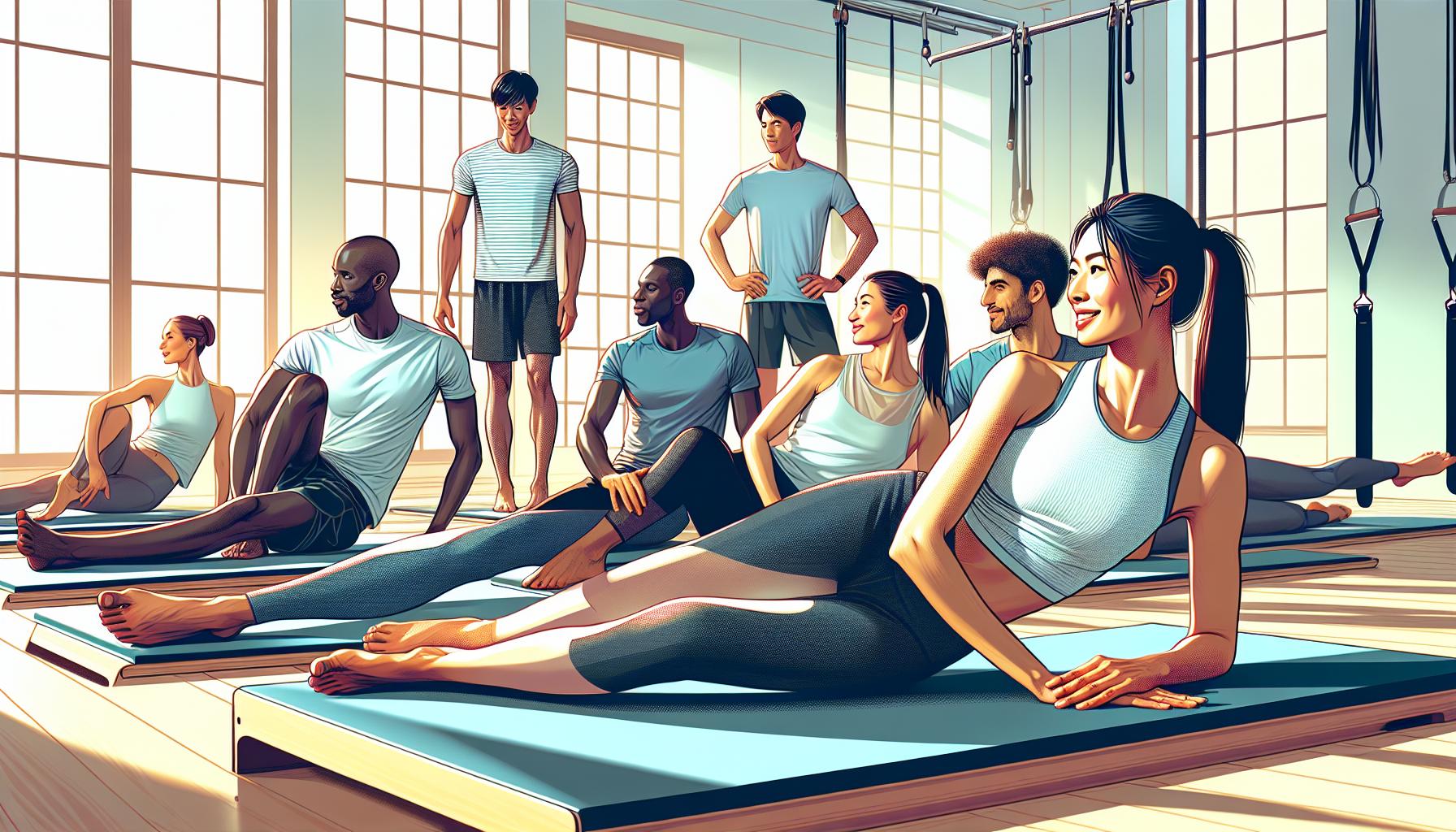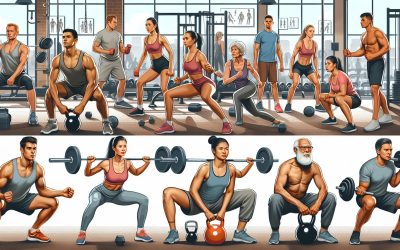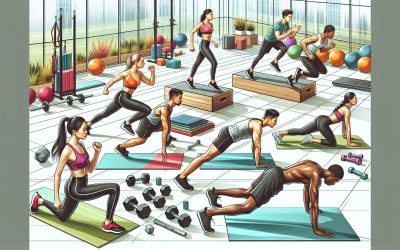Pilates isn’t just another fitness trend; it’s a game-changer for anyone looking to boost their core strength and perfect their posture. Developed in the early 20th century, this mind-body exercise method has proven its worth through decades of success stories. With a focus on controlled movements and breathing, Pilates helps practitioners develop a solid core, which is the foundation of a healthy body and aligned posture.
For those struggling with slouching or back pain, Pilates offers a gentle yet effective solution. It’s not just about the abs; it’s about creating a balanced body where strength and flexibility meet. Whether you’re a fitness newbie or a seasoned athlete, incorporating Pilates into your routine could be the key to unlocking a healthier, more aligned you. Let’s dive into how Pilates can transform your core strength and posture, setting the stage for a lifetime of benefits.
The History of Pilates
Pilates, a comprehensive workout regimen, was developed in the early 20th century by Joseph Pilates, a German physical trainer. With a goal to enhance physical strength, flexibility, and posture without adding muscle bulk, Pilates introduced a method that emphasized precision and controlled movement. The inspiration behind this innovative fitness approach stemmed from his extensive background in gymnastics, boxing, and Greco-Roman wrestling, integrated with a keen interest in Eastern practices like yoga and Zen meditation.
Joseph Pilates began devising his unique series of exercises during the First World War with the aim to improve the rehabilitation program for casualties. Using hospital beds and makeshift equipment, Pilates’ methods focused on assisting injured soldiers in strengthening their bodies and healing their ailments more efficiently. This blend of strengthening, stretching, and balancing exercises proved remarkably effective, laying the foundational principles for what we now recognize as Pilates.
Post-war, Pilates migrated to the United States where he opened the first Pilates studio in New York City, alongside his wife Clara Pilates, in the 1920s. Their studio quickly garnered attention within the dance community, thanks to its success in improving posture, flexibility, and injury prevention. Dancers from all over the city flocked to Pilates’ studio, drawn by the promise of a rehabilitative and preventive exercise system that could keep them performing at their best.
As Pilates’ method, originally termed ‘Contrology,’ gained traction, it wasn’t long before it transcended the confines of dance and rehabilitation into the mainstream fitness world. The principles of Pilates—centering, concentration, control, precision, breath, and flow—were not just beneficial for dancers or athletes but were applicable and advantageous to everyone, regardless of their fitness level or age.
Over the decades, Pilates has evolved, incorporating modern exercise science and rehabilitation principles to ensure it remains an effective and safe workout. Today, Pilates classes can be found globally, offered in various formats, from mat classes requiring no equipment to apparatus-based sessions utilizing devices like the Reformer, Cadillac, and Wunda Chair designed by Pilates himself.
Benefits of Pilates for Core Strength
Pilates has long been celebrated for its profound impact on core strength, a critical element in overall fitness and well-being. The core, encompassing the muscles around the abdomen, lower back, hips, and pelvis, serves as the body’s powerhouse. Pilates meticulously targets these areas through a series of movements and exercises that emphasize precision and control.
One of the hallmark benefits of Pilates is the enhanced muscle tone in the core muscles. This is not about building bulk but rather sculpting the muscles to be lean and strong. The exercises in Pilates, particularly those that require stabilization and pelvic alignment, engage the deep core muscles. These include the transversus abdominis, which plays a crucial role in supporting the spine and internal organs.
Engaging in Pilates regularly promotes an impressive array of benefits for core strength:
- Increased stability and balance: A strong core is essential for maintaining balance and stability as it enables the body to function efficiently during dynamic movements and everyday tasks.
- Improved posture: By strengthening the core, individuals often notice a significant improvement in their overall posture. This can lead to reduced strain on the back and neck, alleviating discomfort and preventing potential injuries.
- Enhanced athletic performance: Athletes across various disciplines can attest to the benefits of a strong core, which translates into better performance, be it in running, swimming, or cycling.
| Core Strength Benefit | Description |
|---|---|
| Stability and Balance | Enhanced by a strong core, allowing for better performance in physical activities and daily movements. |
| Improved Posture | A direct result of strengthened core muscles, contributing to a straighter back and reduced physical strain. |
| Enhanced Athletic Performance | Athletes benefit from improved core strength with noticeable enhancements in their sport-specific activities. |
Additionally, Pilates is uniquely beneficial for core strengthening because it incorporates a focus on breath work. The coordination of breath with movement not only aids in executing the exercises with precision but also helps in engaging the core muscles more deeply. This emphasis on controlled breathing patterns is essential for maximizing the efficacy of the core-strengthening exercises.
Through regular practice, participants of Pilates can expect to see noticeable improvements in their core strength and stability. These enhancements go beyond the physical, impacting one’s posture, balance, and overall functional fitness.
Improving Posture Alignment Through Pilates
Pilates has long been lauded for its effectiveness in building core strength, but it’s equally influential in enhancing posture alignment. As individuals navigate through their daily lives, many develop a tendency to slouch or maintain poor posture due to prolonged periods of sitting or looking down at devices. This imbalance in posture alignment can lead to chronic pain and decreased mobility. Pilates offers a remedy by focusing on the alignment of the spine and strengthening the muscles that support upright and healthy posture.
The practice of Pilates encourages individuals to cultivate an awareness of their body’s positioning and its movement through space. This heightened awareness, combined with the targeted exercises Pilates provides, makes it an ideal method for correcting and maintaining proper posture. Exercises in Pilates are designed to elongate the spine, which counters the common issue of compression caused by poor posture habits. Furthermore, by emphasizing the importance of the pelvic alignment and its relationship with the spine, Pilates helps in establishing a solid foundation for a better posture.
Breath work, a core component of Pilates, plays a pivotal role in improving posture. Proper breathing techniques taught in Pilates foster relaxation and release of tension in the neck and shoulders, areas that are often afflicted by improper posture. By learning to breathe deeply and correctly, individuals can enhance their lung capacity and oxygenate the body more efficiently, leading to improved posture naturally as the body aligns itself to accommodate the increased airflow.
Pilates classes also incorporate exercises that focus specifically on strengthening the back and shoulder muscles. These muscles are crucial for supporting the spine and maintaining an upright posture. Strengthening these areas not only aids in correcting slouching and rounding of the shoulders but also contributes to the overall support and stabilization of the spinal column. As these muscle groups become stronger and more flexible, individuals often notice a significant improvement in their posture both when standing and sitting.
Regular participation in Pilates sessions can therefore lead to long-lasting improvements in posture alignment. Through its comprehensive approach that includes stretching, strengthening, and breathing techniques, Pilates assists in realigning the body and correcting posture imbalances. Those who incorporate Pilates into their fitness regimen may find themselves standing taller, experiencing fewer instances of back pain, and enjoying a greater sense of bodily freedom and ease in movement.
Key Pilates Exercises for Core Strength
Building a strong core is crucial for posture alignment, and Pilates offers a range of exercises specifically designed to target the muscles that make up the core. These exercises not only strengthen the abdominals but also the muscles of the back, promoting an overall balance that is essential for proper posture. Here, we’ll delve into some of the key Pilates exercises that are highly effective in building core strength.
The Hundred
A staple in the Pilates repertoire, the Hundred kicks off many Pilates classes and sets the tone for core engagement. It involves lying on the back, lifting the legs into a table-top position or extended at a 45-degree angle, and lifting the head and shoulders off the mat. The arms are then pumped up and down in small movements for 100 counts, stimulating the core and breathing rhythmically. This exercise not only warms up the body but also brings immediate awareness to the core muscles.
The Plank
While the Plank is widely recognized beyond Pilates, it is embraced within Pilates for its effectiveness in core strengthening. In Pilates, perfecting the form is crucial. The exercise involves holding the body in a straight line from the head to the heels, supported on forearms and toes. It’s not just about endurance; it’s about engaging the core muscles deeply and ensuring proper alignment throughout the body.
Teaser
The Teaser is a challenging Pilates exercise that requires and builds significant core strength. It involves lying on the back with legs extended and arms overhead. The goal is to lift both the legs and the upper body off the ground, reaching towards the toes to form a V shape with the body. This exercise is excellent for targeting the abdominal muscles and improving balance and coordination.
Leg Pull Front
Adding to the variety of core-strengthening exercises, the Leg Pull Front focuses on the abdominals and the muscles of the back. Starting in a plank position, the practitioner alternately lifts one leg at a time without losing the alignment or stability of the core. This exercise not only strengthens the core but also enhances control and stability throughout the body.
Incorporating Pilates Into Your Fitness Routine
When it comes to integrating Pilates into an existing fitness regimen, many may wonder where to begin. The beauty of Pilates lies in its versatility and adaptability; whether someone’s a seasoned athlete or a fitness newbie, Pilates offers a range of exercises that can be tailored to fit individual needs and fitness levels. Starting with basic exercises is key. This allows the body to get accustomed to the new forms of movement and core engagement that are fundamental to Pilates.
For those looking to incorporate Pilates into their routine, it’s advisable to begin with two to three sessions per week. This frequency provides enough repetition to build muscle memory and strength without overwhelming the body. Classes can range from mat sessions, which require no equipment and focus on gravity and body weight for resistance, to equipment-based classes that use machines like the Reformer, Cadillac, and Wunda Chair for added resistance and support.
- Enhanced Core Strength: The cornerstone of Pilates is building a strong core. Regular practice leads to improved core stability and a reduction in back pain.
- Better Posture: Pilates exercises align the spine and strengthen the muscles around it. Over time, this results in naturally improved posture without conscious effort.
- Increased Flexibility: With a focus on stretching and elongating the muscles, Pilates enhances flexibility, reducing the risk of injury.
- Mind-Body Connection: The emphasis on controlled, mindful movements improves body awareness and reduces stress.
It’s also crucial to set realistic goals. Pilates, much like any other fitness routine, doesn’t offer instant results. It’s a process that requires patience, persistence, and time. Celebrating small milestones, such as mastering a new move or noticing improved posture, can provide the motivation to keep going.
Finding the right instructor or Pilates class is equally important. A qualified instructor can provide guidance, modifications, and ensure that exercises are done safely and effectively. Given the personalized nature of Pilates, it’s beneficial to work with someone who understands one’s fitness level, goals, and any existing injuries.
Conclusion
Embracing Pilates as part of one’s fitness journey offers a unique blend of physical and mental benefits. It’s not just about building a stronger core or achieving perfect posture; it’s about embarking on a holistic path to wellness that honors where one is today while gently pushing the boundaries of what’s possible tomorrow. By starting slow, staying consistent, and celebrating every step forward, anyone can transform their health and well-being through Pilates. It’s a journey worth taking, full of discoveries and achievements that go far beyond the mat. So why wait? The perfect time to start is now.
Elizabeth Redd: I am a passionate advocate for Health and Healing, dedicated to empowering individuals to live their best lives.
As the founder and publisher of Health and Healing, I have established myself as a guiding force in the wellness industry.
I am committed to providing the latest research, holistic approaches, and inspiring stories to open new possibilities for your health and healing journey.
Learn more about Elizabeth and Join Us at Health and Healing. Also, check out My About Page.





0 Comments